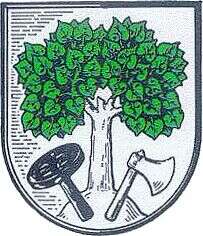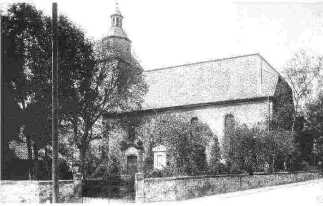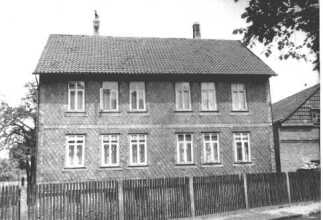|
Grone in the History of our Family The dragoon soldier Hans Heinrich Beinhorn married Anne Catharine Rühling on 11th July 1724 in Grone. Both were the author's great (6x) - grandparents. Ever since then Beinhorns reside in Grone. A house inscription dated 1828 at the house of the shoemaker Justus Christoph Beinhorn is still visible at the address Greittor 7. Around 1900 my great-grandparents,
Wilhelm Hillebrecht and his wife Wilhelmine born Rust, and my grandparents,
Wilhelm Hische with his wife Dorette born Knüppel, moved to Grone
which had 2000 inhabitants at the time.
Grone has always been under the influence of the neighbouring City of Göttingen. 1964 it was incorporated into the City of Göttingen. As a suburb it now has a population of 11 000. Grone is older than Göttingen. Its first settlement is estimated to be around 500 AD. Documentary evidence starts in connection with the Royal Seat of Grone (Pfalz Grona = castle Grona) which was a seat of the Saxonian Emperors in Germany. In a document by Heinrich I, dated 16th October 929, Grone is called "Gronaha". This name means "green water" (gron = green, aha = water) and points to the little river Grone with its green water plants. It runs through the village of Grone and below the castle Grone. Grone was the seat of the judicial and administrative district of "Leineberg". The present coat of arms of Grone shows the linden tree under which court sessions were held. The tree is still living at the corner Groner Landstrasse and Koenigstieg. A first church was built around 800 AD. The first known clergy was Henricus plebanus de Veteri Grone (Old Grone) in 1256. The first Lutheran sermon is delivered already in 1529 long before the reformation allowed new religious life in Göttingen. Wars have destroyed
Grone several times. In the feuds of 1384 and 1387 the forces of Duke Otto
burnt it down. The 30-Years-War brought destruction in 1625 by Wallenstein,
1626 by Tilly and in 1632 the Swedes and Pappenheim's troops sacked it
twice in that year. The Seven-Years-War brought robbery and murder into
the village in 1758 and 1760. In the Napoleonic wars 13 soldiers from Grone
were forced to join the French in their invasion of Russia in 1812. Only
one returned home.
The present Lutheran church Saint Peter
was built in 1754 at the site of the former churches. The picture shows
the condition of about 1940. In the foreground is the war memorial for
the fallen of World War One. The memorial has been removed many years ago.
In World War One Grone suffered 86 fallen soldiers, amongst them my grandfather
Hermann
Hillebrecht.
For many centuries
Grone was a farming village. Local craftsmen and a small trade served the
agricultural requirements.
This is also the reason why Gerd Hillebrecht's
grandparents came to Grone around 1900. Hermann
Hillebrecht, with the family tradition of linen
weaving, went to the local textile mill. He was killed in action in the
First World War.
Wilhelm
Hische came to Grone after his military service
in Spandau and joined the railway as a brakeman only to work himself up
to become a public service officer with the state railways. Shortly after
the turn of the century he and his wife Dorette bought this house which
had been built in 1898 at the address Gotteslager 13. It was in the possession
of the family till 1996. The name of the street means "Gode's Camp"
which it got during the 30-Years-War when Göttingen was besieged.
From 1948 till 1952 Gerd Hillebrecht began his schooling at the elementary school in Grone. The photo shows his teacher Ms. Alexander with her class in 1948. With his white-blonde hair, second row, second from left, the writer of these lines looks into the future.
|



